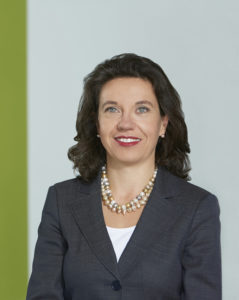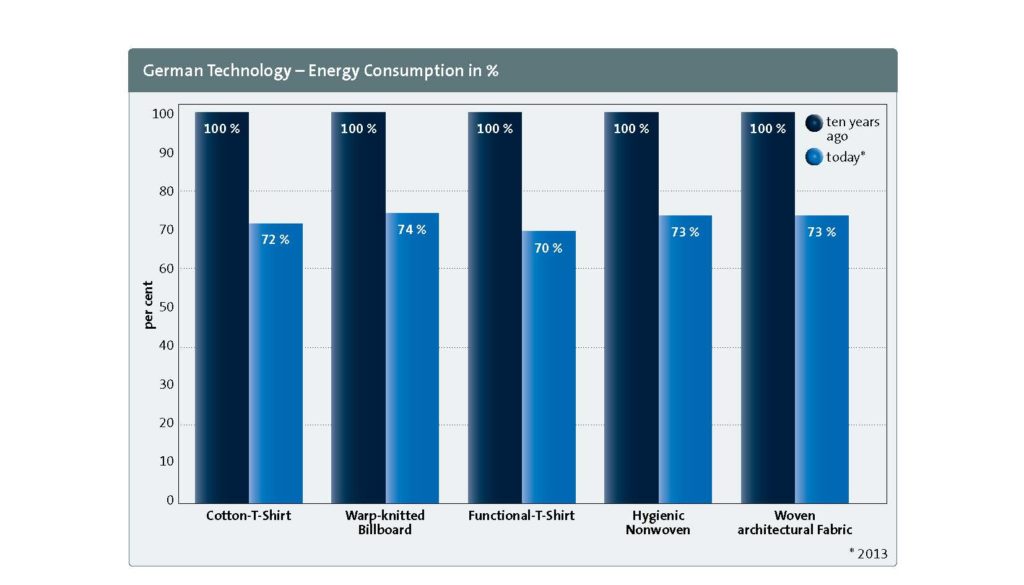 “Master the art of sustainable innovation” is the claim of ITMA 2015, which this time not only intended to be the major world showcase of textile-clothing technology, but also an opportunity to implement projects in favour of a stronger commitment to sustainability in general. Above all, sustainability means public awareness of the future in many different fields: environment, society, economy. In the industry, in order to be competitive one has to be sustainable.
“Master the art of sustainable innovation” is the claim of ITMA 2015, which this time not only intended to be the major world showcase of textile-clothing technology, but also an opportunity to implement projects in favour of a stronger commitment to sustainability in general. Above all, sustainability means public awareness of the future in many different fields: environment, society, economy. In the industry, in order to be competitive one has to be sustainable.
The Role of the German Producers
Certainly, German manufacturers are among the keenest on this subject. Two hundred and forty exhibitors were at this record ITMA event. In 2011, the VDMA Textile Machinery Association, representing approximately 3,100 companies, launched the Blue Competence initiative to support and spread a sustainable development and to interconnect all activities and projects of the German industry on this field, in order to pool the resources (first of all know-how) and to push all associates to promote an effective sustainable development. In fact, in the last few years, Blue Competence pushed the boundaries. Last March Euratex, the European Apparel and Textile Organisation, and VDMA “textile machinery” signed an agreement to join their efforts in a “made-to-measure” campaign. Aim of the agreement was a higher, customised energy efficiency. Not all enterprises are similar and manufacture processes are different too; there exist both middle-sized and smaller businesses and VDMA supports a “made-to-measure” energy plan to meet such different needs.
VDMA members, mainly textile machine manufacturers, are steadily working to optimise new generation machines; they even designed intuitive assistant systems, supported by databases that hold the sum of the process knowledge as well as a simulation of the entire process cycle. However, a textile mill frequently expects energy saving from the machine itself in order to make a reserve capacity available along the production line. In fact, most entrepreneurs did not realise which factor influence the efficiency of a machine, e.g. maintenance, cleaning and skill to manage the entire manufacturing process. Quite frequently, though working on new machinery, the expected saving cannot be achieved because the human factor is underestimated; operators who do not understand the process are like driving a powerful car while shifting into the second gear. It is necessary to train machine operators to exploit the full potential.
Efficiency as a Key Factor
 At the VDMA press conference, held on the first day at ITMA in Milan, chairperson Regina Brueckner, announced: «VDMA and Blue Competence members provide best practice examples for resource and energy saving, sustainable corporate culture and strategies, integration of functions, automation and steps towards Industry 4.0. Additionally we support our customers with technological advice over the whole manufacturing process as we believe that first class machines also need first class consulting and support». Energy efficiency is still a major topic in the textile industry. Therefore, the German industry presents a new edition of the VDMA energy efficiency guide on textile machinery. In addition, German experts not only present their innovations but also demonstrate energy savings along the entire textile production chain of well-defined textile product categories.
At the VDMA press conference, held on the first day at ITMA in Milan, chairperson Regina Brueckner, announced: «VDMA and Blue Competence members provide best practice examples for resource and energy saving, sustainable corporate culture and strategies, integration of functions, automation and steps towards Industry 4.0. Additionally we support our customers with technological advice over the whole manufacturing process as we believe that first class machines also need first class consulting and support». Energy efficiency is still a major topic in the textile industry. Therefore, the German industry presents a new edition of the VDMA energy efficiency guide on textile machinery. In addition, German experts not only present their innovations but also demonstrate energy savings along the entire textile production chain of well-defined textile product categories.
Profound calculations cover the full textile production cycle of specific textile items (cotton T-shirts, functional shirts or textile billboards, hygienic nonwovens and woven architectural fabrics. These five product examples stand for thousands of textile products. Total energy savings of up to 30 % are possible by using German state-of-the-art technology compared to the machinery generation 10 years ago». A considerable immediate saving for textile mills and less release for our planet.
Thomas Waldmann, VDMA Managing Director emphasized, «We have to realise that energy saving lies in the hands of the textile manufacturers, whereas all stages in a production process influence energy efficiency. In a complex textile process, especially the proper use of machines guarantees the expected total energy saving. This is our message to ITMA; not only textile machine suppliers but machine operators too are important to optimise a resource-efficient manufacturing process. First class machines with a great energy saving potential are fundamental to this industry; however we have to be able to exploit them at their best, with the help of top consultants, if necessary». VDMA experts explained the importance of energy-efficient parameters on all textile machines, and gave some examples of good practice to obtain major savings, considering the production volumes of some item categories, aiming at a positive environmental impact.
Once more the key word is optimization of the entire manufacturing cycle.
Technology, innovation, sustainability can go hand in hand, however people can make the difference, provided they are trained and aware of new topics that not only aim at efficient production but disclose a new vision including respect for the environment, that in the end also means competitiveness on a global scale.
by Carla Fiorio




